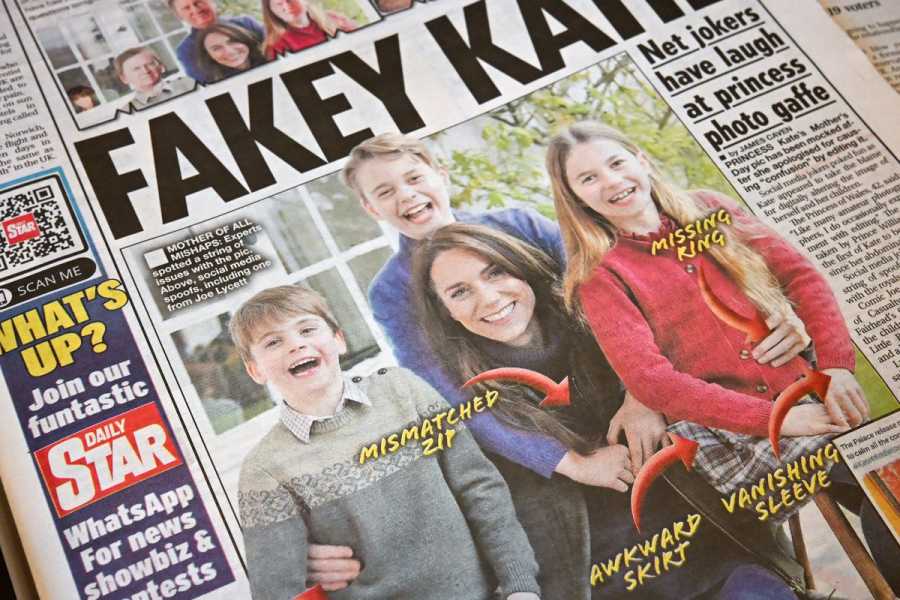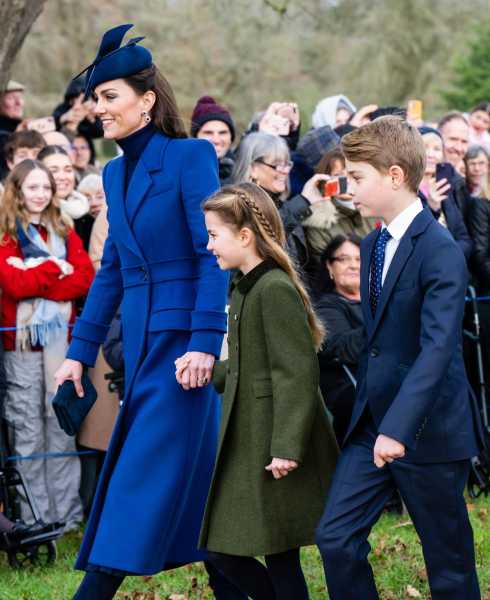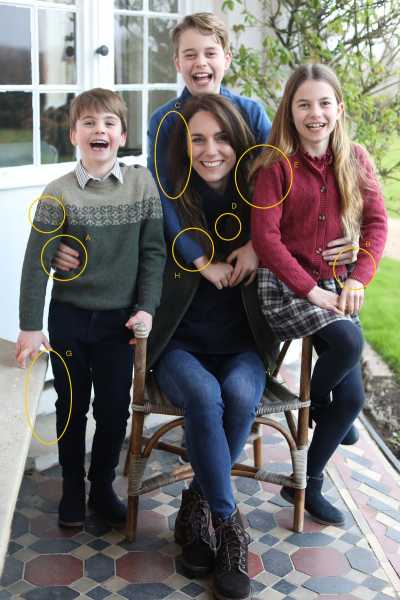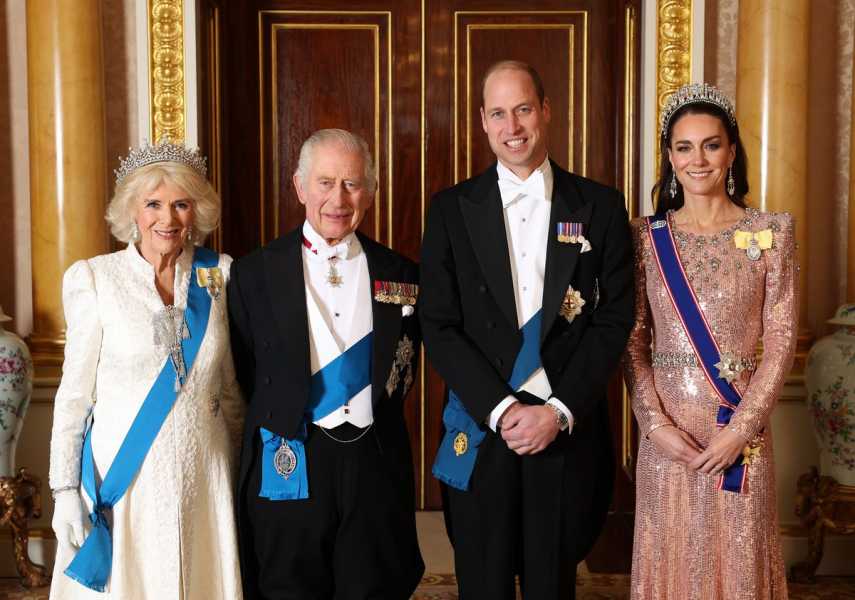We’ve been trained to think of the royal family as a machine. Kategate upended that narrative.

Kategate, the royal scandal about the Princess of Wales’s disappearance from public view, is in full effect. Paul Ellis/AFP via Getty Images Alex Abad-Santos is a senior correspondent who explains what society obsesses over, from Marvel and movies to fitness and skin care. He came to Vox in 2014. Prior to that, he worked at the Atlantic.
The British royal family is no stranger to scandal. From cheating rumors to actual affairs, divorces and abdications, unruly royals, phone recordings, rehab, and one prince’s dubious friendship with Jeffrey Epstein — the list of infamous incidents is long and, at times, salacious.
For the first time in recent memory, however, something odd has happened: The coverups and fumbles have become bigger than the stories themselves.
Case in point: the hack editing job on Kate Middleton’s Mother’s Day photo. The family portrait was presumably designed to get people to stop talking about the Princess of Wales’s absence from the public eye. But instead of quashing skepticism, the janky image has made Kensington Palace less trustworthy and only increased speculation about Kate’s disappearance. The response has also created spinoff scandals, like the Late Show-endorsed rumor that Prince William is allegedly cheating on his ailing wife with her friend Lady Rose Hanbury, Marchioness of Cholmondeley.
The entire kerfuffle is now being called “Kategate.” The longer Kategate goes, the less in control the royal family seems.
For a family and institution that’s been known to operate like an impossibly efficient machine, Kategate becoming an international news story can’t help but feel like a failure on multiple fronts. So what happened to that machine? Why does this scandal feel so big? And why do we care so much?
This is what happened without Queen Elizabeth to guide the family
One of the lasting legacies of Queen Elizabeth was that she was extremely good at her job. The saying “never complain, never explain” is such a simple and perfect distillation of the PR strategy Elizabeth employed. For the queen, it was easier to perform her duties if she kept her cards close. Getting into a back and forth, “explaining” her actions, or “complaining” about someone or something would quickly turn into a no-win situation — especially for a ruler who’s literally above the law.
This could have its drawbacks (see: the lack of response from the palace immediately following Princess Diana’s death), but for the most part it kept the queen above the fray when, say, there was infidelity — or worse — in her sons’ marriages, or her husband said something racist.

Kate Middleton seen on December 25, the last big public event before her reported abdominal surgery in January. Samir Hussein/WireImage
The queen precisely understood that she and her family were a symbol and that favorability is crucial to the monarchy. Prior to her death, the queen’s approval ratings were extremely high. For comparison, right before King Charles’s coronation in the spring of 2023, polling found that Britons’ support for the monarchy fell, with 36 percent of UK adults responding that they had a more negative opinion of the royal family than they did 10 years prior.
Being that well-liked amid long-term decline is a feat.
A key to Queen Elizabeth’s success was that she knew how to live her life in the public eye but remain as neutral as possible. As journalists, politicians, historians, and Vox have noted, Queen Elizabeth was exceptional at not getting caught up in trends, fads, or politics, but rather positioning herself as a symbol of her people — shaking hands with world leaders at state dinners, smiling politely at hospitals, and giving solemn speeches for fallen heroes. She always understood how much of her role as queen was symbolic, and thus kept her private life opaque — she never granted interviews, her private letters and diaries are going to be examined by a trusted aide before being submitted to the royal archives, and the people she surrounded herself with were chosen for their complete loyalty and discretion.
“Go girl, give us nothing” is actually a great strategy if you’re a monarch.
The spine-straightening effect of Elizabeth’s existence seemingly extended to her family, her subjects, and the media. Movies like The Queen and television shows like The Crown have mythologized the queen’s stoicism, portraying her boundaries and privacy as achievements. Never mind that these works are fictional interpretations because the figure they’re admiring was so private. We don’t even know how much money she was worth and only recently found out how much she had lobbied for favorable legislation for her family. Similarly, in her final years, when Elizabeth was occasionally missing events, reporters simply referred to her ailments as “mobility issues.” It’s still unclear how sick she was before she died.
“At the end of her life, Queen Elizabeth II, she had bone cancer,” editor and royal expert Tina Brown told CBS this week. “People didn’t realize that she was actually wheelchair bound in the last six months of her life. The public never saw that, but that was what it was.”
As the New York Times’s Serge Schmemann explained in his obituary for the queen in 2022, even during the queen’s “annus horribilis” in 1992, when three of her children separated or divorced their partners, she was seen as above the fray. Schmemann states that even though the queen apparently didn’t get along with Prime Minister Margaret Thatcher, a sentiment that’s aged rather well in retrospect, that might be our own projection. “As with so many things attributed to the queen in print and film, the reality is not known,” Schmemann wrote. “The queen reportedly denied that these were her real sentiments, and Thatcher never publicly discussed her relations with the queen.”
The Queen’s stiff upper lip is why her descendants like William and Harry have caught scrutiny for both explaining and complaining.
Even following her passing, only the Queen’s vigil has brought feuding William and Harry back together (briefly) to honor their grandmother. Outside of the palace, some wondered if her passing might allow for “conversations that were deliberately avoided out of respect for Queen Elizabeth,” as Bronwen Maddox, head of British think tank Chatham House, told the Washington Post in 2022. Discussions about some traditions, including whether the monarch should be head of the Church of England, “might be more open and more accessible now.”
There’s a reason that, despite the number of royal embarrassments she and her family lived through and how polarizing some of her descendants have become, Queen Elizabeth remains largely beloved. She didn’t have a perfect record, but her surviving family members aren’t as good at playing the game of giving the public nothing to talk about, especially in the face of scandal.
Meghan Markle is no longer the tabloid lightning rod
In 2020, Prince Harry and Meghan Markle, the Duke and Duchess of Sussex, announced that they were stepping back from their royal duties and moving to the United States. A year later, Meghan revealed to Oprah that the move stemmed from her deteriorating mental health; postpartum depression after the birth of her son Archie, combined with how terribly the British press treated her and a lack of sympathy from members of the royal family, led Meghan to have suicidal thoughts, Meghan said.
The British tabloids were plainly quite horrible, often stooping to racist tropes to discuss Meghan and her family, painting the Duchess as a family-breaking, low-class villain. After moving to the US, said tabloids couldn’t focus on the Duke and Duchess of Sussex as intensely as they once did.
Without Harry and Meghan, the British royal reporters and gossip rags began focusing on other members of the family, William and Kate in particular.
Of late, the giant rumor swirling is that Prince William is cheating with the Marchioness of Cholmondeley (pronounced, as Stephen Colbert noted, “Chumley”). There’s also been rampant gossip about Middleton allegedly having an eating disorder. Kate’s disappearance from public life has only amplified that chatter, as has the botched Photoshop image she released to quash the rumors.
When Meghan was in the spotlight, it wasn’t hard for outside observers to see the distinct difference between how the press covered her actions (negative) and how they reported on Kate (neutral to positive). But as my colleague Constance Grady pointed out, Kategate is also exposing how much more willing the Palace is to protect the latter. Even if the botched photo was clumsy, it was still an attempt to protect the future Queen of England.

The doctored Mother’s Day photo of Kate Middleton and her children that Kensington Palace released, with its most egregious errors annotated. Kensington Palace/Adam Griffin
“Part of why the story has gone viral in the first place is that in the past, that’s reportedly not something they were willing to do for Meghan Markle,” Grady explained, asserting that from the royal family’s perspective, there’s much more riding on Kate’s future. Power must protect power. But just because there’s a solid effort to shield Kate from the British press, it doesn’t mean she’s immune. This time around, she might be able to feel just how relentless and ruthless they can be.
Prince Charles is sick, and there’s no sense that anyone has taken charge
In early February, King Charles announced that he had been diagnosed with cancer and would be stepping away from royal duties. Although Buckingham Palace hasn’t confirmed what kind of cancer King Charles has, Prime Minister Rishi Sunak said it was caught early. There’s also a rumor that Charles’s cancer is much more serious than thought and that Charles has a history of supporting alternative medicine which may clash with his oncologists. Whatever the case, Charles’s absence has left the royal family without a figurehead, a leader who at least appears to be in charge.
One facet that’s strange about Kate Middleton’s disappearance is that it has been flanked by peculiar absences by other members of the royal family in addition to Charles’s aforementioned recovery. In late February, William skipped the funeral of his godfather King Constantine of Greece. And a week or so later, it was announced that Queen Consort Camilla would also be taking a break from her royal duties.
“The lurid headlines suggest the matter is frivolous; rather, they mask a crisis,” Tanya Gold wrote for The Cut, explaining that the optics of royals enjoying themselves and being seen at events is crucial to the monarchy. Charles’s and Kate’s concurrent disappearances from the public eye are, to Gold, a sign of fracturing power.
“Now the two most charismatic royals are absent … without them, we are left with ancient, unphotogenic unknowns who seem to come from King Lear rather than life (the nobles Gloucester and Kent, anyone?) and the two reluctants: Prince William and Queen Camilla. Reluctants will not do,” Gold wrote.

This is how the royal family is supposed to be all the time (on display and in fancy clothes). Chris Jackson/Getty Images For Buckingham Palace
Similarly, back in 2013 the essayist and critic Hilary Mantel drew an insightful comparison: that the British Royal Family were like pandas. Both are alive, she argued, because of outside human intervention. Left to fend for themselves, they probably wouldn’t exist and adapt to modern life. Their importance is that they’re visible.
“But aren’t they interesting? Aren’t they nice to look at? Some people find them endearing; some pity them for their precarious situation; everybody stares at them, and however airy the enclosure they inhabit, it’s still a cage,” Mantel wrote.
Extending that comparison, the absence of all these royals is akin to being at that cursed zoo looking at an empty panda exhibit. Everyone, including the tourists, is now standing around asking each other what’s wrong, where the pandas are, and why these pandas are nowhere to be found, all knowing that the previous panda was on display till her dying day. The more we ask questions, the more we realize that there are no pandas to distract us from the real question of why there’s even a zoo at all.
Sourse: vox.com